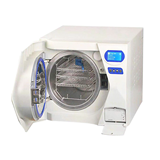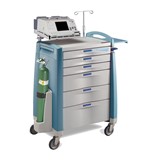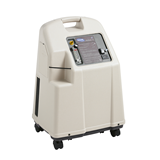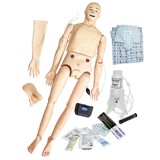Key takeaways
- Life-saving potential: AED defibrillators can increase survival rates from sudden cardiac arrest by up to 70% when used promptly (Australian Resuscitation Council, 2024).
- Types matter: Automatic (fully) AEDs are ideal for untrained users, semi-automatic units offer guided shocks for trained responders, and paediatric models cater to children.
- Pricing range: Units in Australia typically cost between $1,200 and $3,500, with accessories and service plans adding $200–$500 annually.
- Maintenance is essential: Routine checks and battery replacement every 2–5 years ensure readiness in emergencies.
- Compliance requirements: AEDs used in public or workplace environments must meet Therapeutic Goods Administration (TGA) standards and Australian safety regulations.
- Training and integration: Staff training dramatically improves effectiveness; workplaces should implement clear protocols for device access and use.
- Placement and accessibility: Properly positioned AEDs in visible, high-traffic areas with clear signage and unobstructed access can reduce response time in emergencies and improve survival rates by up to 70%.
- Training and staff preparedness: Well-trained staff who regularly refresh their CPR and AED skills dramatically increase the likelihood of successful intervention, with survival rates rising from around 8–10% to over 40% in Australian workplaces.
Introduction
Sudden cardiac arrest is a leading cause of death in Australia, claiming over 12,000 lives annually (Heart Foundation, 2024). Rapid intervention is critical: defibrillation within the first few minutes can dramatically improve survival outcomes. AED (Automated External Defibrillator) defibrillators are portable, user-friendly devices that deliver life-saving shocks to restore normal heart rhythm.
For businesses, schools, gyms, and community facilities, investing in a reliable AED is not only a duty of care but also a compliance requirement under certain workplace safety standards. This guide provides an actionable, comprehensive overview for Australian buyers looking to purchase an AED defibrillator, including types, pricing, operation, maintenance, compliance, and financing considerations.
Types of AED defibrillators
Fully automatic AEDs
- Deliver shocks automatically after rhythm analysis.
- Ideal for untrained users or high-stress environments.
- Pros: Minimal user input, guided prompts, fast operation.
- Cons: Slightly higher cost compared to semi-automatic models.
Semi-automatic AEDs
- Provide voice and visual prompts; user presses the shock button.
- Best for workplaces or schools where staff are trained.
- Pros: Clear guidance, high safety features.
- Cons: Requires brief user decision-making, may be slower for untrained responders.
Paediatric AEDs
- Designed for children under 8 years or <25 kg.
- Often includes attenuated pads or settings to reduce shock intensity.
Portable vs cabinet units
- Portable AEDs: Lightweight, easy to carry across large venues.
- Cabinet units: Mounted in public areas, sometimes with alarm systems for quick retrieval.
Pricing guide
- Entry-level AED: $1,200–$1,800 – basic semi-automatic units suitable for small offices.
- Mid-range AED: $1,800–$2,500 – fully automatic units with enhanced features like CPR feedback and longer battery life.
- High-end AED: $2,500–$3,500 – advanced models with Bluetooth connectivity, paediatric options, and robust service plans.
- Accessories & ongoing costs:
- Replacement electrode pads: $50–$120 per set.
- Battery replacement: $150–$300 depending on model.
- Carrying case or wall cabinet: $100–$250.
- Annual service & maintenance plan: $200–$500.
Operation and usage
- Step-by-step AED use:
- Power on the device.
- Attach electrode pads to the patient’s bare chest.
- Follow voice or visual prompts; the device analyses the heart rhythm.
- Deliver shock if prompted, then continue CPR as advised.
- User considerations:
- Ensure device is accessible and clearly visible.
- Conduct regular staff training sessions; even untrained users can operate AEDs with minimal instruction.
- Display clear signage for quick identification in emergencies.
Maintenance and parts
- Battery check: Inspect monthly; replace according to manufacturer guidance (typically 2–5 years).
- Electrode pads: Check expiry dates; replace if used or expired.
- Software updates: Some AEDs have firmware updates to improve performance and compliance.
- Environment: Store AEDs in dry, room-temperature locations. Avoid extreme heat or humidity.
Practical tip: Assign a staff member to maintain a monthly AED readiness checklist, noting battery, pads, and operational status.
Financing and warranties
- Financing options: Many suppliers offer payment plans or lease arrangements for businesses.
- Warranty coverage: Standard warranties last 5 years, covering defects in materials or workmanship. Extended plans can cover battery and pad replacement.
- ROI insight: Investing in a well-maintained AED can mitigate liability, improve workplace safety, and potentially save lives, offsetting the device cost multiple times over.
Compliance and certification considerations in Australia
- TGA registration: All AEDs sold in Australia must be listed on the Therapeutic Goods Register.
- Workplace safety standards: Businesses may be required under Safe Work Australia guidelines to have an accessible AED, particularly for high-risk industries.
- Training obligations: While AEDs are designed for untrained users, providing staff with CPR and AED training is strongly recommended and may be legally mandated in certain sectors.
- Liability protection: Following manufacturer guidance, maintenance schedules, and training reduces risk and ensures compliance with local occupational health laws.
Placement and accessibility
Where you position your AED can make the difference between life and death. Proper placement ensures that staff, students, or the public can access the device quickly during an emergency.
Practical tips for optimal placement in Australia:
- High-traffic, visible locations: Position AEDs in areas like reception desks, gyms, cafeterias, or main corridors.
- Multiple accessible points: Large workplaces, schools, or sports facilities may require more than one unit to meet response time targets.
- Clear signage: Use highly visible markers or wall-mounted signage so anyone can locate the AED within seconds.
- Consider height and accessibility: Devices should be mounted at a reachable height for all adults, and ideally near pathways free of obstacles.
- Emergency plan integration: Make sure placement aligns with evacuation routes and first responder access.
Australian context: Many states recommend AEDs be installed within 1–3 minutes of expected cardiac arrest incidents. Studies show that early defibrillation within 3–5 minutes increases survival rates by up to 70%. Proper placement maximises this impact.
Training and staff preparedness
An AED alone isn’t enough; staff must know how to use it confidently. Training ensures quick, correct intervention and builds overall workplace safety culture.
Actionable training strategies:
- CPR and AED certification: Enroll staff in recognised courses accredited by the Australian Resuscitation Council (ARC).
- Regular refresher sessions: Run annual or biannual refreshers to maintain skill retention and confidence.
- Scenario-based practice: Simulate real-life emergencies so staff can rehearse AED deployment under stress.
- Role assignments: Identify specific responders and ensure everyone knows their responsibilities during a cardiac event.
- Documentation and compliance: Keep training records for WHS compliance and workplace safety audits.
Impact in Australia: Businesses with trained staff can double the likelihood of effective AED use. According to St John Ambulance, workplaces with trained responders have reported survival rates improving from 8–10% to over 40%.
Common questions buyers have
Q1. How often should an AED be serviced?
- Monthly visual inspections; battery and pad replacement as per manufacturer (typically every 2–5 years). Annual servicing is recommended for workplace compliance.
Q2. Can anyone use an AED?
- Yes. AEDs are designed for non-medical users with clear voice/visual prompts. Training increases confidence and effectiveness.
Q3. Are there AEDs suitable for children?
- Yes. Paediatric AEDs or models with paediatric settings reduce shock intensity for children under 8 years or <25 kg.
Q4. How do I know if my AED is TGA-compliant?
- Check the Therapeutic Goods Administration (TGA) database; suppliers should provide proof of registration.
Q5. Do AEDs require registration or special licensing?
- No personal or business licence is required, but compliance with workplace safety and maintenance obligations is necessary.
Q6. Can AEDs be used outdoors or in harsh environments?
- Some units are rated for IP55 or higher, offering water and dust resistance. Always check manufacturer specifications.
Conclusion
Purchasing an AED defibrillator in Australia is a critical decision for any workplace, public facility, or community environment. By understanding the types of devices, costs, operation, maintenance, compliance requirements, and practical use cases, buyers can make informed, confident choices. Properly deployed and maintained AEDs save lives, reduce liability, and support a safer workplace culture.




-160x160-state_article-rel-cat.png)















